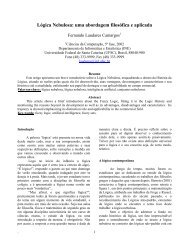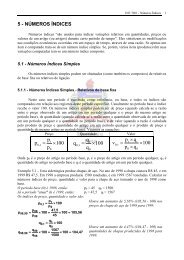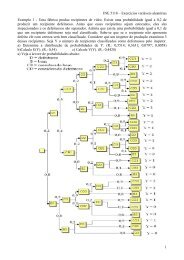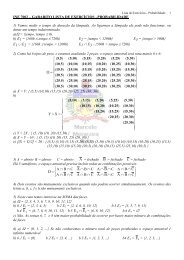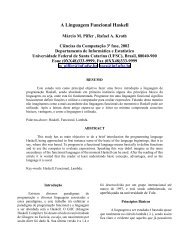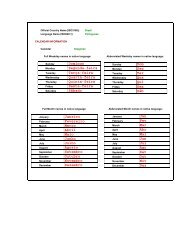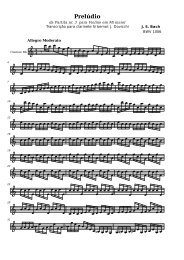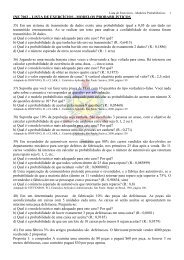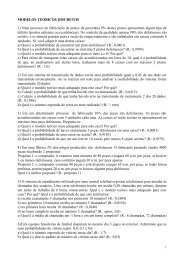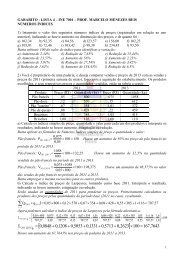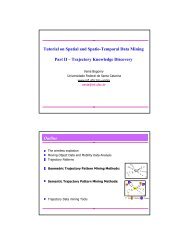Anais do IHC'2001 - Departamento de Informática e Estatística - UFSC
Anais do IHC'2001 - Departamento de Informática e Estatística - UFSC
Anais do IHC'2001 - Departamento de Informática e Estatística - UFSC
You also want an ePaper? Increase the reach of your titles
YUMPU automatically turns print PDFs into web optimized ePapers that Google loves.
184<br />
<strong>Anais</strong> <strong>do</strong> IHC’2001 - IV Workshop sobre Fatores Humanos em Sistemas Computacionais<br />
virtual places where they can meet to discuss objects and topics of interest and to work<br />
collaboratively on group projects while maintaining the capability of accessing materials in<br />
digital collections. We refer to this second category of virtual place as a group space.<br />
Our group has been conducting research in the area of digital libraries and has produced<br />
advances both in the construction of digital contents and in the provision of services for<br />
users in the context of a distributed system architecture. We have implemented and<br />
<strong>de</strong>ployed various architectural components which are available to a wi<strong>de</strong> user community.<br />
In this context, we have <strong>de</strong>signed and implemented two versions of personal spaces and<br />
one of group spaces. We report our <strong>de</strong>sign and <strong>de</strong>velopment experiences in this particular<br />
area of our digital library.<br />
The remain<strong>de</strong>r of the paper is organized as follows: Section 2 elaborates on our digital<br />
libraries effort focusing on human-computer interaction issues, architectural components<br />
and interfaces and services to be integrated. Next, we present the <strong>de</strong>sign rationale for<br />
personal and group spaces in Section 3. We discuss prototypical implementations for our<br />
<strong>de</strong>sign in Section 4 and qualitative evaluations and usage results Section 5. We briefly<br />
review projects elsewhere that are related to our work in Section 6. Finally, we discuss the<br />
status of our project as well as ongoing and future work in Section 7.<br />
2. Digital Libraries Context<br />
Our group has <strong>de</strong>veloped a system architecture for a digital library that addresses the needs<br />
for information management, communication and collaboration among a highly distributed<br />
community of users [Sánchez and Leggett 1997]. We have aimed to build both a practical,<br />
functional digital library and a testbed for research of open issues in the field, including<br />
aspects of personalized and group interfaces, collaborative work and information<br />
visualization. We refer to our digital libraries initiative as “University Digital Libraries for<br />
All”, or U-DL-A.<br />
2.1 U-DL-A components.<br />
The realization of our digital library has called for research and <strong>de</strong>velopment efforts in<br />
three major areas: building content, <strong>de</strong>signing components to provi<strong>de</strong> general infrastructure<br />
(such as information retrieval services, multimedia management and agent essentials) and<br />
user interfaces and environments. With regard to digital contents, we have ma<strong>de</strong> progress<br />
in the construction of collections of digital theses, special collections from our library and<br />
university publications. Our advances in the area of general infrastructure inclu<strong>de</strong> a<br />
distributed framework that integrates services and interfaces, with implementations using<br />
KQML, CORBA and RMI [Barceinas et al. 1998; Cocoletzi 2001] as well as components<br />
implementing various popular information retrieval mechanisms. Finally, in the area of<br />
user interfaces and collaboration environments, our work has resulted in various access and<br />
visualization mechanisms [Sánchez 2001]. Given the strong relationship of these<br />
components with the work presented in this paper, we provi<strong>de</strong> some additional <strong>de</strong>tails<br />
about them in this section.<br />
UVA. U-DL-A Visualization Aid (UVA) is a component of our digital library that allows<br />
users to visualize large information spaces that are organized hierarchically as 3D trees<br />
[Proal et al. 2000]. UVA has been tested and has received good reviews when used with



